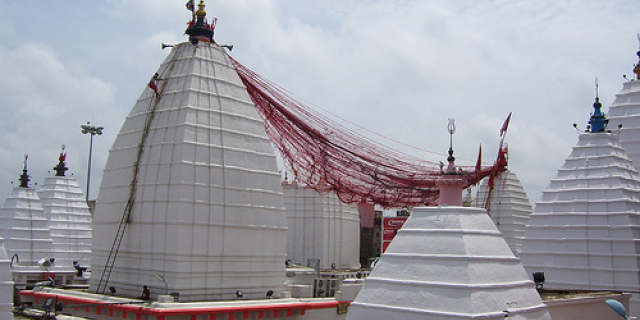चिलिका झील
( Chilika Lake )
Chilika Lake is the largest brackish water lagoon in Asia and second largest coastal lagoon in the world, spread over the Puri, Khordha and Ganjam districts of Odisha state on the east coast of India, at the mouth of the Daya River, flowing into the Bay of Bengal, covering an area of over 1,100 square kilometres (420 sq mi).
Chilika Lake comes after the New Caledonian barrier reef. It has been listed as a tentative UNESCO World Heritage site. Its salinity varies by region, from freshwater where rivers flow in, to oceanic salinity levels due to tidal influx.
 Golabai Sasan excavation site
Golabai Sasan excavation siteGeological evidence indicates that Chilika Lake was part of the Bay of Bengal during the later stages of the Pleistocene period (1.8 million to 10,000 years BP).
Excavations were conducted by the Archaeological Survey of India at Golabai Sasan (20°1′7″N 85°32′54″E / 20.01861°N 85.54833°E) north of Chilika lake in Khurdha district.[1] Golabai provides evidence of a sequence of Chilika area culture in three phases: Neolithic (c. 1600 BCE), Chalcolithic (c. 1400 BCE to c. 900 BCE) and Iron Age (c. 900 BCE to c. 800 BCE). Radiocarbon dating traced the earliest level of Golbai to 2300 BCE. The site is located on the left bank of the Malaguni River, a tributary of the Daya River, which flows into Chilika Lake. This location, which gave access to the sea via Chilika Lake, gives evidence of the maritime activities of this region. The recovery of many woodworking adzes and other artifacts shows that Golabai was a boat-building centre. Golabai is the only excavated site in Odisha where boat building has been revealed. This also indicates that Chilika lake was close to Golabai and it facilitated the maritime trade of people in the area during the ancient period.[2]
Ancient texts say the southern sector of Chilika was a major harbour for maritime commerce, when Kharavela (c. 209 BCE–after 170 BCE), the King of Kalinga, was known as the "Lord of the Sea".[3]
Ptolemy (150 CE), the Greek geographer, referred to Palur as the port Paloura, located close to the point of departure situated outside of the southern tip of the lake at Kantiagarh, from where ships bound for different parts of Southeast Asia sailed. After 639, the Chinese pilgrims Fa-Hien and Hiuen-Tsang mention a famous port "Che-li-ta-loChing" near the shore of the ocean which was a thoroughfare and resting place for seagoing traders and strangers from distant lands. This port was located at 'Chhatragarh' on the banks of Chilika Lake.[2]
A fourth-century legend, often told to explain the birth of Chilika, states that the pirate king, Raktabahhu, planned to attack Puri with a huge fleet of ships. To avoid detection, he stealthily anchored out of sight, off the mouth to the sea. The deception was revealed by the ships' refuse floating to the shore, thus warning the town's people, who escaped with all their possessions. Raktabahu felt betrayed when he found an abandoned town and directed his fury towards the sea that had betrayed him. The sea parted to let the army march in, then surged back, drowned the army and formed the present lake.[4]
Archeological excavations discovered seventh-century ship anchors and stone memoirs dedicated to battle heroes at a village named Kanas, about 25 km (16 mi) north of Chilika on the banks of Nuna river, which flows into the lake. This gives evidence of a historic naval engagement off the coast.
A 10th-century text, the Brahmanda Purana, mentions Chilika Lake as an important centre of trade and commerce, and a shelter for ships sailing to Java, Malaya, Singhala, China and other countries. This suggests that the lake was then deep enough for berthing seagoing ships and had a channel to the sea big enough for loaded trading ships embarking to Southeast Asia.[5][6][7] The villagers around Chilika Lake still observe an annual festival called "Bali Yatra" (Journey to Bali).
In 1803, the British entered the shores of the lake, reached Puri and occupied Odisha with the help of Fateh Muhammed. Fateh Muhammed, in turn, was rewarded by the British with freehold of the areas of Malud and Parikud, of the present day Garh Krishnaprasad revenue block.[3]
Over the years, poets including Kabibar Radhanath Ray and Pandit Godavarish Mishra, freedom fighters and Saints have extolled historicity of the lake as pertinent to its cultural, spiritual, religious and scenic aspects.[3][5]
"Gopabandhu Das, a famous Odiya poet, became impatient to see the beauty of the march of colorful sights and sounds of Chilika lagoon while going by train. He asked the speeding train to stop for a moment so that he could enjoy the beauty. It is because of the beauty that arrests him much".[8]





























Add new comment